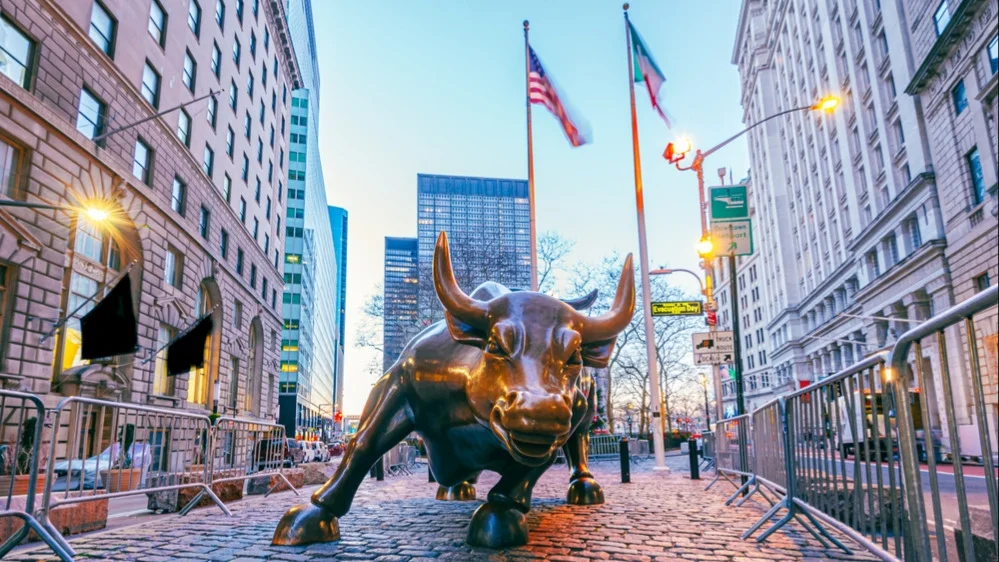The S&P 500 index ended the week with its fifth consecutive record high. Is it already time to fear a bubble?
A "lottery ticket mentality" is "emerging in the market," analysts warned

The S&P 500 Index rose to a record high of 6,388.6 points at the end of trading on Friday, July 25. On the week, it updated historical highs at the close of all five business days - such a situation occurred for the first time since November 2021, writes Barron's. The Nasdaq Composite index also hit a record high, the 15th time this year. The Dow Jones Industrial Average ended trading just 0.25 percent below its record close on Dec. 4, notes CNBC.
The second quarter reporting season is quiet and markets continue to ignore the risks associated with the approaching deadline for trade negotiations with the US, Barron's points out. Investors have taken a positive view of a trade deal between the U.S. and Japan that includes 15 percent duties on imports, as well as the prospect of a similar agreement with the EU. While those rates are well above the levels in place before Donald Trump returned to the White House, they look much softer compared to his April proposals that crashed stocks. "These first deals are bad, but investors are happy already that this is not a full-blown trade war," explained Financial Times chief strategist at Pictet Asset Management Luca Paolini.
Still, the ongoing rally is already raising concerns among some analysts, who warn that the market's euphoria is entering the bubble stage. Here's what they're saying about the bubble on Wall Street:
- Barclays' "equity market euphoria" indicator - a composite measure that includes flows into derivatives, volatility and market sentiment - has risen to twice its normal level, reaching an area that has been associated with asset market bubbles in the past. "This indicator clearly shows that there is euphoria in the market," Stefano Pascale, head of derivatives strategy for the US equity market at Barclays, told the FT.
- Analysts at Goldman Sachs note that their speculative trading indicator has reached its highest level since the dot-com bubble of 1998-2001 and the 2020-2021 pandemic period. For now, however, the indicator remains markedly below the peaks of those years. The benchmark reflects an increased share of trading volume in loss-making stocks, "penny stocks" and companies with inflated multiples to revenue. The investment bank notes that in addition to the "Magnificent Seven" leaders like Nvidia and Tesla, speculative stocks like BigBear.ai, Lucid and Plug Power were among the most actively traded securities last month;
"The rise in speculative trading in recent weeks points to the potential for a near-term broad market rally, but also raises the risk of a subsequent pullback," Goldman Sachs said in a note cited by Yahoo Finance.
- "We're seeing early parallels to what happened during the Internet boom of the late '90s and early 2000s," said Dan Ivasin, chief investment officer at management firm Pimco, commenting on the return fashion for "meme" stocks. - A lottery ticket mentality is emerging. It's a dangerous construct."
- "Across the S&P 500 Index, metrics like price-to-sales, price-to-cash flow, price-to-book value, and price-to-dividends are all near record levels," notes Rob Arnott, chairman of Research Affiliates. - Investing in the narrow group of technology stocks that now dominate the index is like picking up pennies in front of a roller." He also notes that the market is valuing the current leaders of the AI race as if they will have no competition in the future.
"That said, investors are afraid to get out of these overheated and popular securities early - if you do it too soon, you can have a big drawdown," Arnott added.
- The wave of optimism has also affected the corporate debt market: the yield spread between the bonds of the largest U.S. companies with high ratings and government bonds decreased to 0.8 p.p., which is the lowest level since 2005, says the FT. - This is one of the lowest levels since 2005, writes FT. Analysts at Deutsche Bank in a note on July 24 questioned whether the increase in borrowing to buy stocks does not indicate "the highest degree of euphoria" - such as the market has not seen since 1999 and 2007.
- The risk of inflating a bubble in the market is increasing against the backdrop of monetary policy easing and weakening financial regulation, Bank of America strategists warn. They note that the weighted average of key rates of the world's leading central banks fell from 4.8% to 4.4% over the year after the central banks of the U.S., U.K., Europe and China reduced the cost of borrowing. The BofA forecasts that the weighted average rate will fall to 3.9% over the next 12 months. In parallel, regulators are discussing measures that should increase the share of retail investors in the U.S. market. "More retail means more liquidity, more volatility, more bubble," quotes Bloomberg note by BofA analyst Michael Hartnett.
This article was AI-translated and verified by a human editor
